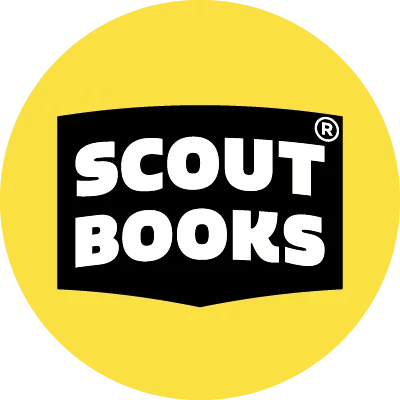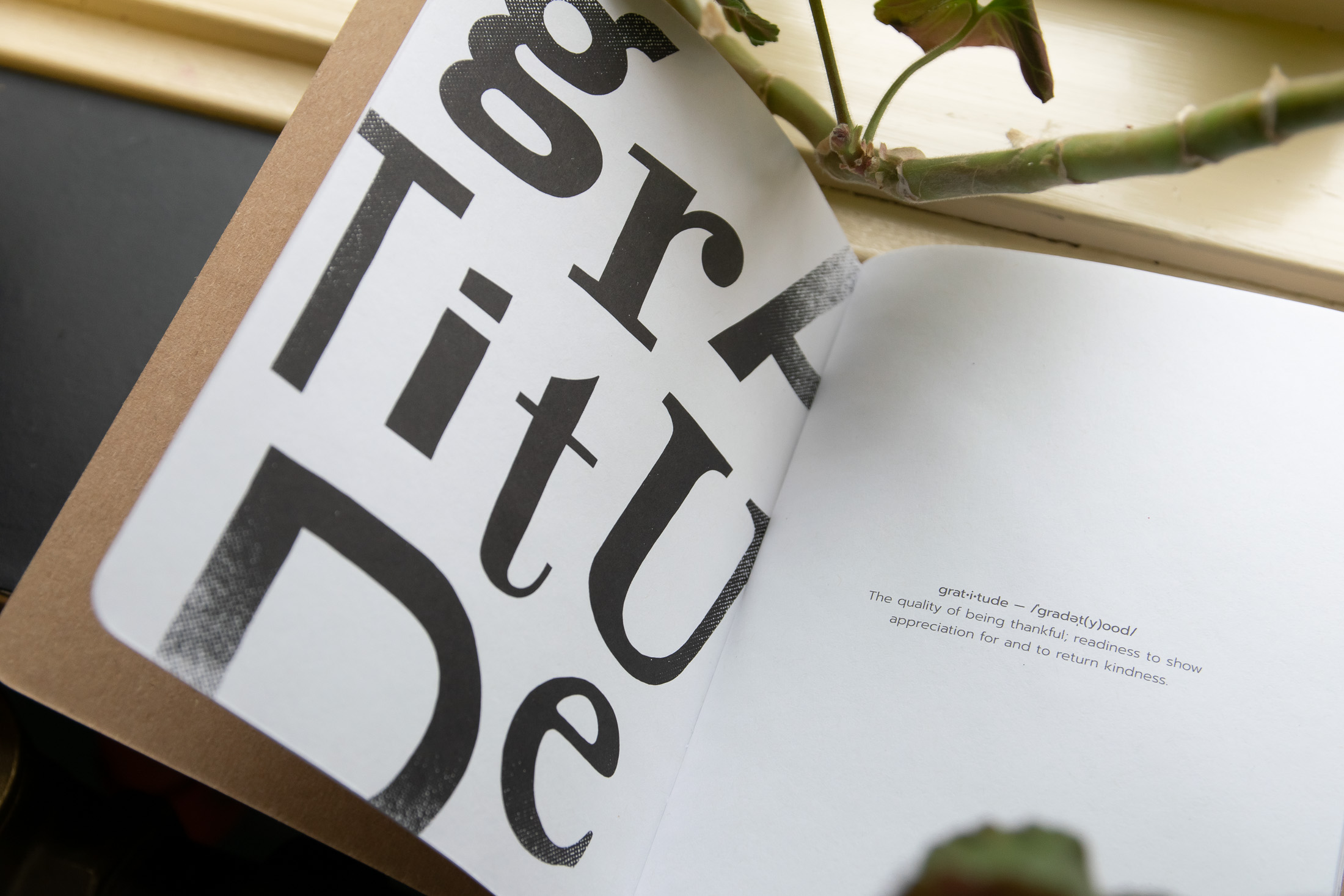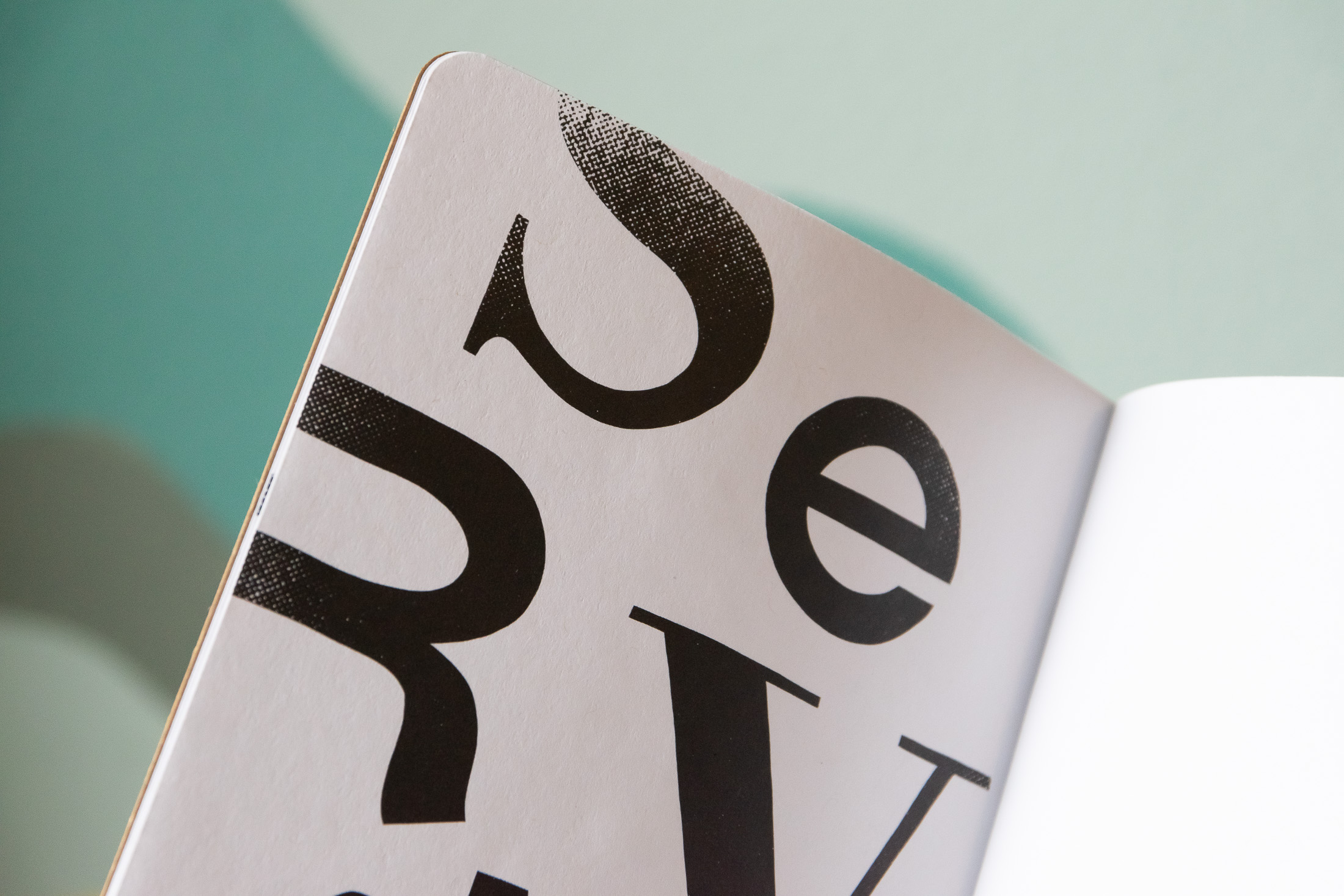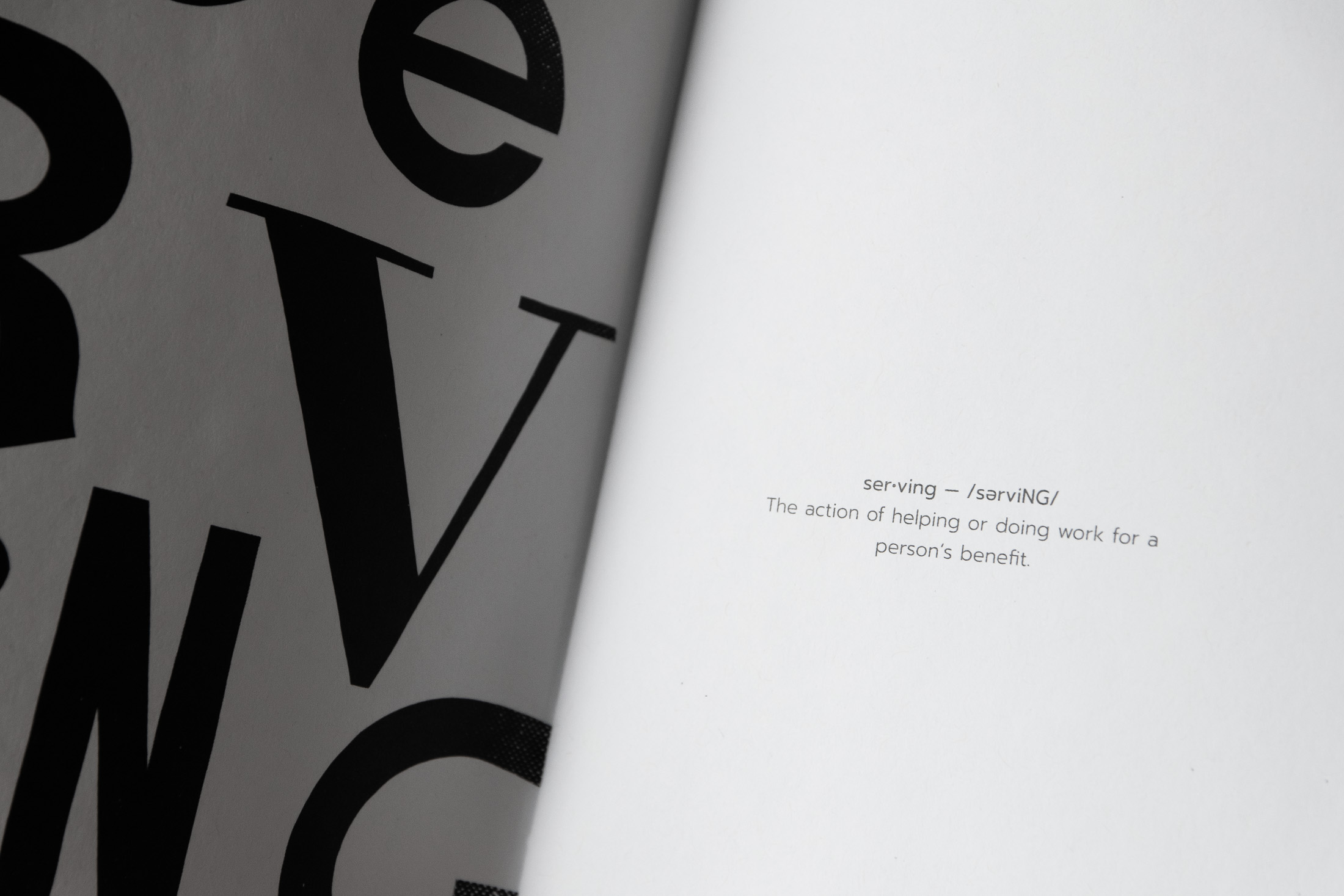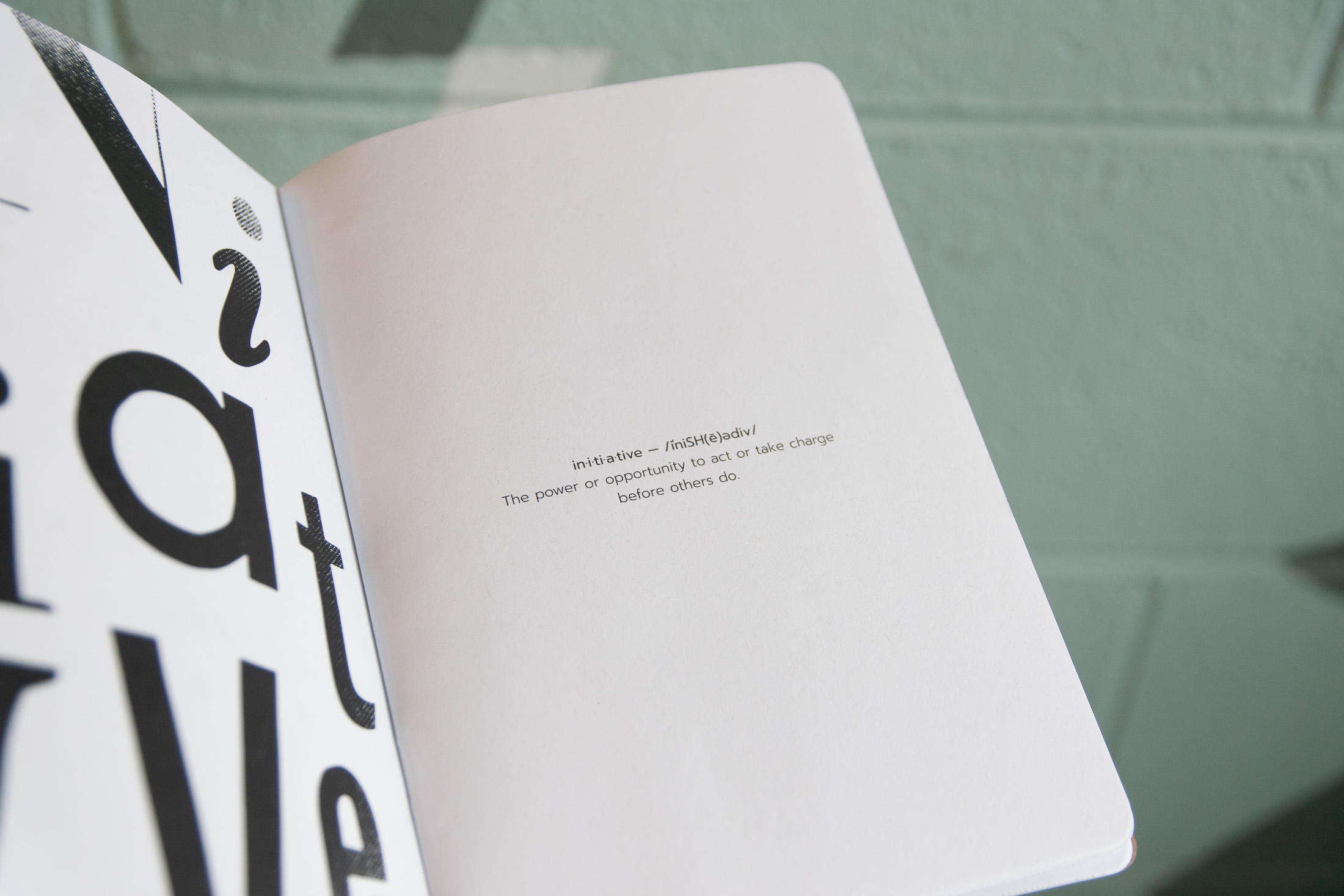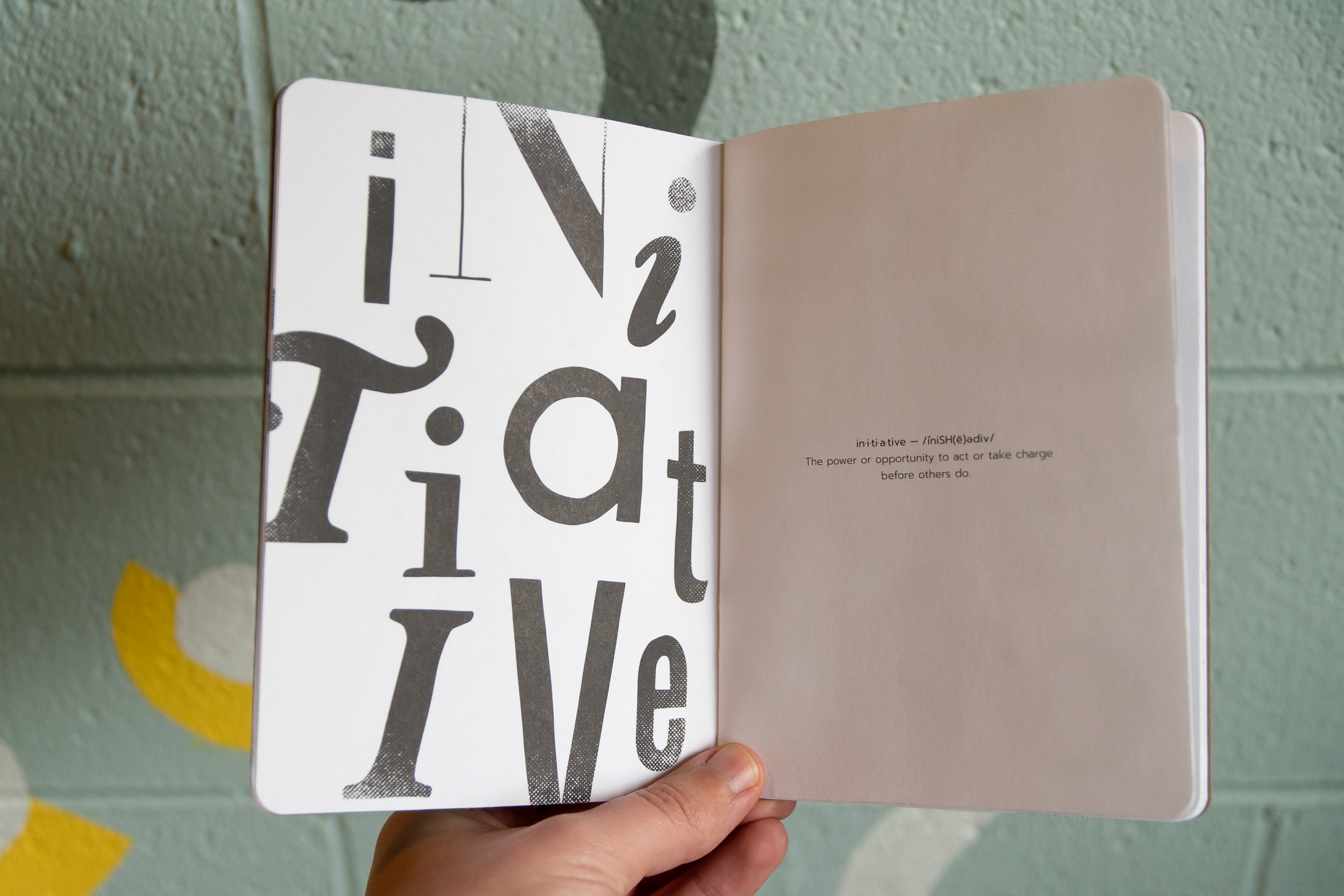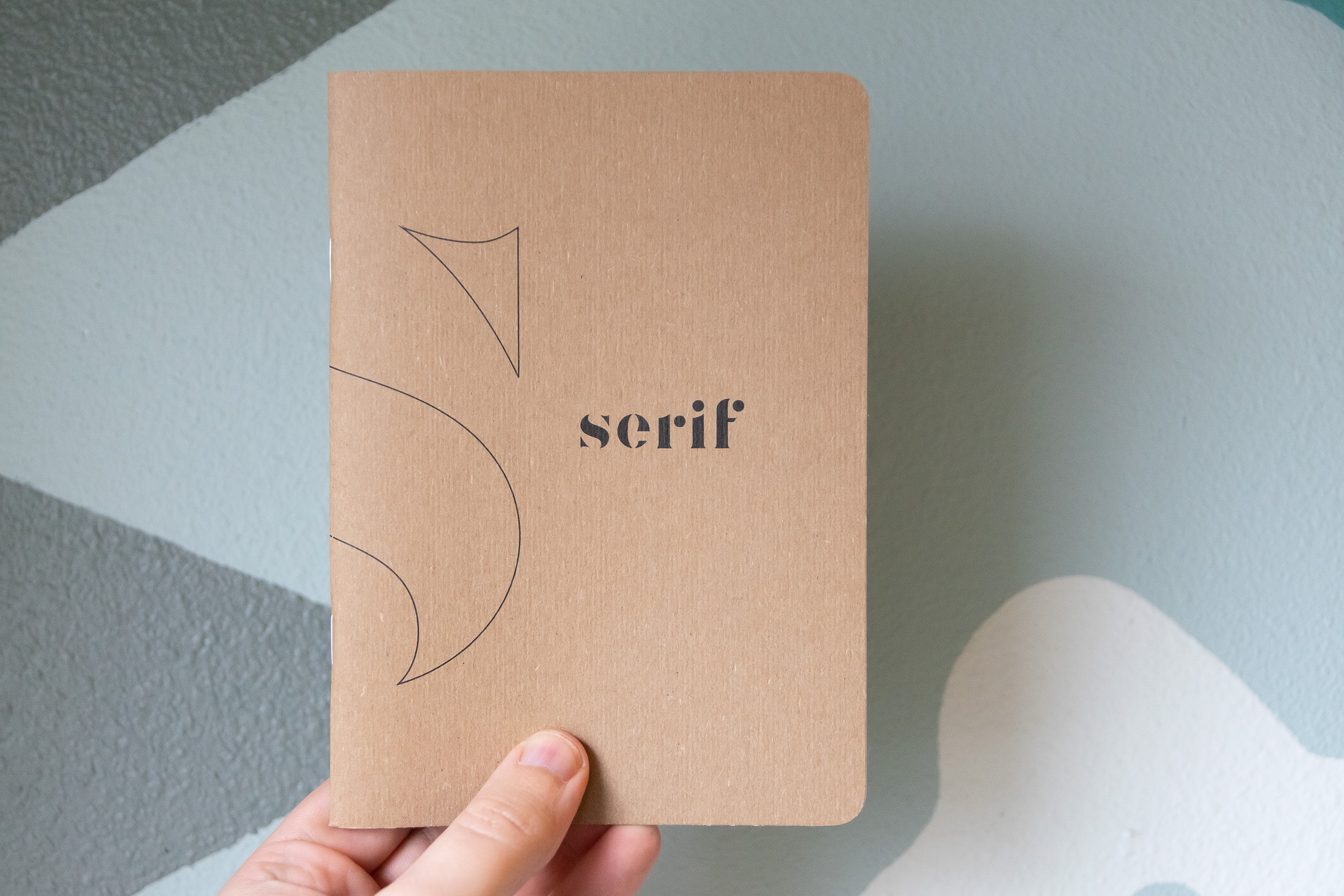These typographic-based books from the aptly named Serif Creative immediately caught our attention when we received the artwork. We’re big fans of businesses using Scout Books to share what their brand is about, and that’s exactly what Serif Creative is doing with these books. Sean Gorant, a senior designer at Serif, designed these books with big splashy letters all the way to the bleed, and these pages are offset by minimalistic credos of their core offerings. These books by Serif Creative stand out, and are a great keepsake to give to clients that is both beautiful and functional. We talked with Todd Novak, a Creative Director at Serif Creative about putting these books together, and what they’re all about at Serif.
Tell us about Serif Creative.
Serif is a full-service agency in Columbus, Ohio providing brand strategy and creative executions in design, photography, and video production. Our team is focused on making holistic content that creates a true connection between our clients and their audience. We love making work that our clients can’t wait to share.
What inspired you to create a physical, printed piece?
Having recently refreshed the brand identity of Serif Creative, we wanted to reestablish the image of our agency with a new suite of collateral. And nothing beats the significance of tangible design when you’re looking to make a lasting impression.
One of our core offerings is a strategy summit that takes our clients out of their office routine. When people are able to think openly about a topic, typically their minds take two different tangents. One is set to solving a problem and striving to make connections. The other tends to wander and imagine in abstract thought. That is why we doodle when we are on the phone, in class, or in a creative flow. We believe that providing creative prompts might help encourage abstract thinking, making the workshop or meeting more fruitful.
Can you tell us about the design process for the books?
To make a book that could act as a springboard for unrestrained thinking, we chose to start with the core principles of our company. By juxtaposing expressive lettering with hand-drawn conceptual imagery, our goal was to provoke both analytical and creative minds to draw their own connections between the literal and the abstract. The tension in that space fuels the kind of unobstructed thinking we wanted to rouse from whoever holds one of these books.
How are your notebooks shared?
When meeting with a client for the first time, or leading a strategy summit, we hand out the books to our clients for note-taking, doodling, ideation, and goodwill. They also serve as a great branded leave-behind.
What was fun and/or challenging about designing for and working with Scout Books?
As with any print project, the challenge of working within the constraints of a physical product is part of the fun. Taking a template as simple as a saddle stitch notebook and exploring different ways to fill the space can be daunting, like any blank canvas. But it’s liberating once you lean into the freedom and give into your own creative impulses.
The challenge we faced for this booklet was editing what we were creating as our intention was to provide a catalyst for imagination, not to dictate prescriptive creativity. We had to remind ourselves not to overcompensate for the negative space, knowing that it would be filled in with lots of thoughts and sketches.
Why do you think print still resonates in an increasingly digital world?
When you spend the majority of your time in a world of pixels and interfaces, the rare moments when you’re able to interact with a tangible object become more impactful. This is especially true if you thoughtfully craft that experience to play to the unique qualities of a printed piece.
When creating a printed piece, we take into account that the end user will experience it in the same way we do. They’ll hold the same shape, feel the same paper, and read the same words—there is no alternative interaction. We have their attention, and as creatives with something to communicate, we are crucially aware of our responsibility to not waste it.
Huge thanks to Todd Novak for speaking with us about this project! Check Serif’s work out via their website.
